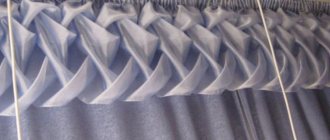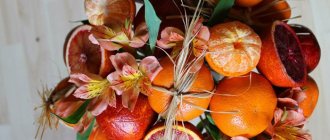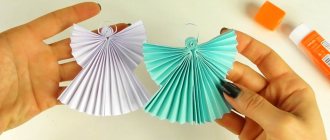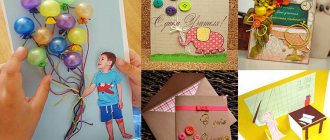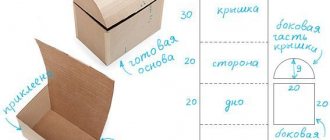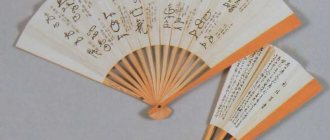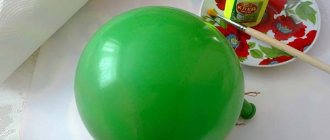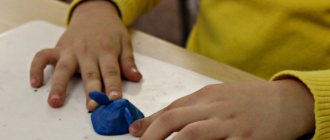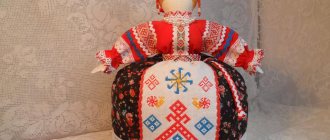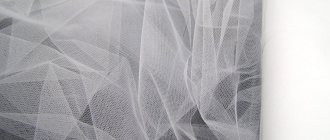The interior of the bedroom should not only be conducive to sleep, but also pleasing to the eye during the daytime. How to achieve this? Take a thorough approach to the issue of bedroom decor. The choice of textiles plays a primary role here.
A snow-white bedspread will be the perfect addition to any interior!
The most important place in the bedroom is occupied by the bed, which means its decor will attract maximum attention. How to make a bed attractive? Place an interesting blanket on it.
A homemade bedspread will fill your bedroom with comfort and warmth.
In stores it is difficult to find a bedspread that you immediately like, that will naturally fit into the interior of the room, and that will perform the necessary functions. It is not always possible to order tailoring of textile components of the interior from an atelier. Therefore, an excellent solution to the problem would be to sew a bedspread with your own hands.
Deciding on the model, fabric, color
Sewing a bedspread is not difficult if you have basic cutting and sewing skills. After all, any simple-cut bedspread is a simple rectangle of fabric.
A baby blanket should be soft and pleasant in texture.
An ordinary piece of material of the required size must be processed in such a way as to obtain the desired result. The bedspread can be light, flowing, without lining, or thoroughly dense, with stitching. In addition, a banal rectangle can be decorated: add frills, ruffles, decorative stitching, embroidery, applique and get a unique bedspread.
The bedspread should be chosen based on personal preferences, the overall style of the room, and the purpose of this textile element.
Everyone chooses the style and design of the bedspread for themselves.
An excellent solution would be a double-sided bedspread. If the sides are made of a single fabric, then it is extremely easy to use. There will be no need to worry about which side to place it on the bed. When the turns are with different patterns, you will have the opportunity to change the look of the bedroom according to your mood, covering the bed in different ways.
Choose a fabric that will only give you a comfortable feeling during use.
A bedspread decorated with various decors (ribbons, lace, puffs, flounces) will give the room incredible comfort and create a romantic atmosphere. At the same time, the abundance of textile components in the lower part performs a practical function - it hides the bed frame.
A silk bedspread is stylish, fashionable and sophisticated!
A bedspread made of smooth satin, silk fabric or a tapestry version will add sophistication to the room. The use of shiny fabric and gilded trim will add chic and pomp.
A thick-pile bedspread made of wool or fur will do an excellent job of providing additional insulation and will add softness and comfort to the room.
A quilted bedspread will protect you from the cold, create a homely, well-groomed environment, and an atmosphere of warmth and comfort.
Complex bedspread patterns will require more effort and skill from the seamstress.
ADVICE. For a craftswoman with minimal experience, it is better to choose no-frills bedspread models, fabrics that do not require special care in the work. An excellent option would be cotton, medium-weight blended fabrics.
The better the quality of the fabric, the more pleasant it will be to use the bedspread later.
Choosing a color
The color scheme of the product must match the style of the room, but can be seasonal, taking into account the lighting of the room and its size.
The type of fabric for the bedspread should also be selected based on seasonality.
- The bedspread should not create the impression of contrast, unless this is an intended design technique. In a small room, the bed should not be a bright spot, otherwise it can create the illusion of filling the entire space. It is better to choose a beautiful bedspread that is similar in color to the trim and surrounding objects.
- Bedroom lighting, primary and secondary colors are also of no small importance. It is preferable to dilute the gloomy atmosphere with a warm, light palette of shades. With good lighting and general warmth, it is possible to show great imagination in choosing the color of the bedspread.
- Cold shine and shimmer are only appropriate in a large room, preferably in the summer. Otherwise, the supposed chic will become an inappropriate farce.
- The diversity of the interior is facilitated by fabrics containing patterns and the use of decorative elements in the decoration of the bedspread.
- Warm colors always bring freshness and create comfort. Pastel colors can visually expand the boundaries of a room.
Heavy bedspreads are best used in large bedrooms.
Getting ready to sew
When the choice of model, type of fabric, color has been made, you need to decide what you will need in the work and how to sew a bedspread with your own hands. The first thing you need to consider when sewing a bedspread is fabric consumption. To do this you need to make simple measurements.
The delicate colors of the bedspread always add lightness to the entire room!
Materials and tools for sewing
There are many textile options for sewing a bedspread with your own hands, the choice depends on personal preferences. However, experienced needlewomen do not recommend using synthetics and yarn with a high acrylic content. You also need to carefully select the shade of the fabric so that it matches the rest of the interior.
| Wool | Wool bedspreads have different textures, as well as weaving. Mostly sheep yarn is suitable for their manufacture. Such blankets can be thin or denser, depending on the desired result. Absorbs moisture well and retains heat |
| Silk | It has a characteristic shine, fits well into a classic interior, but does not hold heat well and does not absorb moisture. |
| Cotton | Used for a children's bed. Combined with fleece, which is also considered a rather practical material |
| Jacquard | These bedspreads match the design, made in the same color scheme. The products are quite dense and hold heat well |
| Bamboo | Fabric made from bamboo fibers is environmentally friendly, elastic and easy to wash. |
| Velvet | Good for a living room bedspread. The material is easy to care for and retains heat well |
| Linen | A linen blanket will smooth out all the unevenness on the bed, but this fabric is very difficult to iron |
| Satin | A good summer option for the bedroom. The material is very light, washes and irons well. Among the advantages are a variety of color options |
| Velours | Easy to care for, absorbs moisture well |
To create a bedspread you will need:
- fabric (yarn);
- tape measure;
- needle;
- threads;
- pattern;
- sewing machine.
The threads must be of the highest density so that the blanket can withstand various loads during operation. Each needlewoman chooses the fabric at her own discretion. The main thing is that it fits the interior and does not stand out too much from the general appearance.
It is very important to correctly calculate the amount of materials needed. To do this, you need to take into account, first of all, the size of the bed, as well as the presence of assemblies and other decorative nuances.
Wool Silk
Cotton
Jacquard
Velvet Linen Satin
Velours
Determining the size of the bedspread
- Using a measuring tape, you need to measure the bed in length, width, height. These measurements will help you model the size of the future bedspread and create a pattern.
- Using a regular squared notebook sheet, make a drawing on a reduced scale. This will help you visually design the bedspread model. The resulting pattern is a rectangle with a side supplemented, if necessary, with a frill of the required height. Sometimes, due to the location of the bed, height lines are not needed. For example, if there is a headboard at the bed, or its wall location.
- When constructing a drawing, we take into account the fit of the fabric and seam allowances. This will be from 3 to 5 cm. If you are planning a quilted bedspread, we display the lines of the proposed seams on the model. This method makes it possible to correct a pattern you don’t like without damaging the materials or the sewing process.
A DIY bedspread will add a lot of warmth and coziness to your room.
Calculating fabric consumption
To calculate the required amount of fabric, you need to know its width. If it is 1.4 m, then for a bedspread for a double bed you will have to cut out 2 parts of the main fabric and sew them together. This is not always acceptable for the aesthetics of the finished product. Therefore, it is advisable to take care of the required fabric width in advance.
A lot depends on the choice of the initial cut pattern; try to choose the ideal one for your bed.
It’s easy to calculate the fabric for the top of the bedspread: you need to know the length, width, and add a few extra centimeters to them. The fabric consumption for a bedspread with a frill should be taken into account with regard to folds, if they need to be laid. If they are present, the length of the strip must be additionally multiplied by 1.5.
An ideal and precisely thought out pattern for a bedspread - all you have to do is substitute your values.
With a fabric width of 2.8 m, most likely, 1 length of the product will be enough. In this case, the frills should fit into the remaining width of the fabric. If the fabric is 1.4 m, then it is necessary to lay 2 lengths of the main fabric and the total length of all sides with a frill. In this case, the fabric consumption is significant, and the quality of the bedspread will suffer due to additional seams.
For sewing bedspreads, choose the fabric that will be easier for you to work with during the sewing process.
How to sew a bedspread
The procedure, as already noted, depends on the specific sewing technology. Only some details are universal.
Deciding on the sizes
Before doing this, you need to take measurements from the bed, that is, determine its length and width. It is also worth considering that the product that hangs down from the mattress looks best, so you need to add another 60 cm to the width, and about 30 cm to the length.
Calculation of fabric consumption and cutting
First you need to understand how much fabric will be needed to implement each detail, and only then summarize the results obtained. Practice shows that the “face”, back and frill are often made of different materials, so their consumption is determined separately. All you need to do is determine the area of the bedspread based on the data obtained in the previous paragraph, and then calculate how much fabric will be needed.
We cut and sew
Having completed the preparation of the necessary materials, we proceed to the most important task - cutting out the bedspread for sewing. The selected material directly affects the complexity of subsequent actions. With light, slippery fabrics (silk, satin), extreme caution is needed when cutting and subsequent sewing of the product. Forming the stitch will present additional difficulties.
You can decorate your bedspread with a neat frill, which will always add elegance to the appearance of your bed.
ADVICE. The presence of a complex pattern on the fabric requires precise adjustment of the elements during the cutting and sewing process. Choosing a solid color material will make your work much easier.
Patchwork quilts are becoming more and more popular every year.
The best way to cut is to fold the fabric in half so that the length of the main fabric is half along the fold line. You can set the width in the same way. Then thoroughly level the fabric and pin it together. The cutting should be carried out exclusively on a flat surface, and do not allow cutting of materials in the air.
Even a quilted bedspread can look different depending on the pattern you choose.
The frill does not have to be one-piece. You can use the resulting leftover fabric. It is important that all typesetting strips are cut in the same direction (lengthwise or crosswise).
To create a patchwork bedspread, select pieces of fabric that match each other in color and texture.
If the bedspread requires the presence of lining fabric, a synthetic padding layer, they are cut out by analogy with the main parts. In the process of stitching, they are connected into a whole blanket. If there is a pattern on the fabric, it must also be taken into account when cutting.
Bright blankets for sleeping beds will always charge you with positive energy before bed.
Next it’s time to sew all the parts together. Using a sewing machine, we connect the base of the bedspread with the frill. To do this, place the parts with the wrong side up and place seams along the edges. Do not forget to add folds if they are provided for in the model. It is easy to sew a bedspread without unnecessary details. If there is a lining or insulation, all layers must be folded evenly together, then sewn.
A patchwork quilt is best created from not very bright pieces of fabric.
ADVICE. It is better to pre-clip additional parts with pins along with the main ones, or make hand basting seams.
If there is a stitch, you should first sew its seams, then sew the main elements. If you have no experience, it is better to sew the stitches by hand first.
For a children's bedspread, you need to choose not only a pleasant color, but also high-quality natural material.
Algorithm for making a bedspread
The subtleties of the sewing process depend on the model of the bedspread. Quilted products, bed covers made from rags and with decorative details (puffs and ruffles) are sewn in different ways. Having decided to sew a cape for a sleeping place from faux fur or tapestry with your own hands, as well as to make a patchwork or quilted product, you need to carefully study the sequence of actions and features of this process.
Using patchwork technique
The patchwork technique, or patchwork, is one of the simplest sewing methods. Initially, you need to decide on the shape and size of the component elements. They can be square, rectangular or triangular. This point depends on personal preference. To ensure that the parts are the same size, it is recommended to cut out a pattern from thick paper. Having swept the edges of the parts cut from the fabric, you should sew them to each other.
To make the joints of the flaps invisible, it is recommended to sew a backing, which will also give the product greater density. If you have extensive experience in using the patchwork technique on the surface of the bedspread, you can connect the parts, creating a complex pattern from them. This is quite labor-intensive work, but the result will exceed your wildest expectations. The photo shows how beautiful the product made using this technique looks.
In the form of a blanket - made of tapestry or faux fur
Tapestry and faux fur are some of the most popular materials for making bedspreads. However, if it is necessary to expand the dimensions of the room, it is better to refuse to choose such fabrics, since they tend to narrow the space.
It is recommended to sew products of simple shapes from tapestry fabric and faux fur. The sewing process consists of the following steps:
- Lay the fabric out on a horizontal surface, wrong side up.
- Mark the canvas with chalk. When cutting, it is recommended to leave additional allowances. For hemming edges and seams, 1–1.5 cm is enough.
- Sew connecting seams.
- To finish the edges, make a hem.
- To prevent the product from sliding off the bed, it is recommended to sew an elastic band around the edges.
Luxurious bedspread with puffs and ruffles
Only an experienced seamstress can sew a bedspread with such decorative elements. With minimal experience with a sewing machine, it is better to give preference to simpler products. The process of creating a puffed bedspread includes the following steps:
- Material calculation. Puffs are made on a canvas measuring 5x5 cm or 10x10 cm. These elements must fill all matter. Then the measurement is repeated and the reduction factor that will be required to calculate the total amount of material is determined.
- On the wrong side of the main fabric, apply a pattern of decorative elements with the direction of the stitches.
- Quilt the fabric according to the outline.
- Pull the puffs.
- Place the front and lining fabrics together with the wrong sides facing inward and stitch along the edges.
Next you should make ruffles. To do this, you need to sew a frill to the base around the entire perimeter, the length of which depends on the height of the bed and personal preferences. If the bed has two backs, the decorative element is sewn only in width to two opposite sides. If there is a headboard, the frill is not sewn to the part of the product adjacent to it.
When cutting, allowances must be made. To make the frill beautiful, it is recommended to make it 1.5-2 times longer than the side of the base to which it will be attached. This element can simply be beautifully assembled by sewing it to the base, or even folds can be made. It should be taken into account that the thicker the folds on the frill are, the greater the amount of material will be needed. In order for a product with ruffles to drape beautifully, it is recommended to make inserts at its corners.
Cozy quilted bedspread
This product will decorate any bedroom and can be used as a demi-season blanket. Satin or silk fabric is optimal for sewing. The work consists of the following stages:
- Determine the size of the cells or diamonds. It must be borne in mind that the smaller these elements, the greater the amount of matter required. For this reason, it is recommended to make 5–10 cm allowances around the entire perimeter of the canvas.
- Baste the fabric along all marked lines.
- Sew the fabric next to the basting seams. It is necessary to ensure that there is no sagging of material when crossing decorative seams.
- Quilt the fabric. On the stitched product, final markings are made, the type of which depends on the method of processing the cuts. For example, the edge can simply be hemmed, decorated with a strip of fabric cut along the bias or with folds. This will make the bedspread look complete.
Trial version
When you don’t have enough sewing experience, taking on a responsible job is always scary. Especially if the choice fell on complex fabrics or bedspread patterns. In this case, an excellent option would be to sew a trial version yourself.
Anyone can create a beautiful bedspread with their own hands, the main thing is to charge yourself with a lot of desire.
This is a great way to create a beautiful bedspread from simpler materials, practice making even seams, laying folds, stitching, and taking into account the pattern.
ADVICE. A good training option would be a patchwork-style bedspread. This technique requires painstaking work, but it provides invaluable experience.
A children's blanket complemented with accessories-toys in the same theme.
Finished products can be used in the country house or in a children’s room. The skills of creating a bedspread with your own hands will undoubtedly come in handy in the future. The question of how to sew a bedspread will no longer arise.
Sleeping beds can be complemented with bedspreads that match the aquatic color scheme with the bed linen.
Sewing a bedspread with your own hands is not such a difficult task. This will require a little time, effort, and skills. Accurate calculation and patience guarantee a beautiful and cozy bedspread.
The nuances of manufacturing in different techniques
There are many techniques for making bedspreads. It can be a solid quilted fabric or a blanket made of patches (patchwork). There are also models with puffs - they are created by folds and creases, but only an experienced craftswoman can sew them. Using a hook or knitting needles you can make a knitted blanket. All these methods are original and beautiful in their own way, so they must be selected taking into account the interior of the room.
Quilted
It is advisable to sew a quilted bedspread from silk or satin to emphasize the texture of the product. It's quite simple to do:
- First you need to measure the dimensions of the bed, then add a few cm to these figures for seams and frills.
- When choosing fabric, it is advisable to remember that the larger the pattern, the less fabric is required.
- All necessary lines must be marked with long stitches, along which the line will then be sewn.
- When making finishing seams, it is important to ensure that there are no “sags” of fabric.
- After the product is assembled, you need to make seams along the edges. They can be quilted using various techniques, often using bias tape or frill.
A quilt is used for rooms in Provence, country or shabby chic style. You can sew pillowcases using the same method. The result is a complete bedding set.
Knitted
Knitted items always fill the room with comfort and warmth. A blanket is made with knitting needles in two ways: whole or from different pieces. For the first option, it is advisable to take wool yarn or any other yarn that holds heat well. Before you start, you need to make a small sample and use it to calculate how many loops are in 10 cm. The approximate number of loops for a double blanket is 500–520, and rows are 550–750.
How to choose an adult and children's mattress for a bed, tips for housewives
A product made from fragments is made in a different way. Several squares of approximately 35 loops are knitted. The number of rows will depend on the density of the knitting, and the total number of parts is determined after measuring the dimensions of the bed.
Crocheting a blanket is done a little differently, but the complexity does not change. Knitting can start from the edge and go along the rows with various lifts and loops, but some knitters prefer the “granny square”. The downside of this product is that it is not suitable for every interior.
Patchwork
A patchwork bedspread is made from different scraps. The process is very simple if you study the master class:
- First you need to think about the design and shape of the parts.
- Next, select several pieces from different fabrics.
- Cut out parts of the desired shape (squares, triangles, hexagons, asymmetrical elements).
- Sew the flaps according to the previously made pattern, first securing them with pins.
- Iron the front part of the product and sew the fabric to the insulation.
- After this, sew the top part to the bottom.
At the end, you need to make the edging with bias tape or another similar method. Such a patchwork quilt can be made from pieces of fabric that are completely different in density and color. The main thing is to show your imagination and carefully monitor your actions to avoid mistakes.
With puffs
It is advisable to make such a bedspread from silk or satin, then it will look most attractive. The puffs themselves are formed from lines and stitches clearly drawn on the fabric, creating a three-dimensional pattern after screeding. Many craftswomen wonder how to sew such a bedspread with their own hands. Without experience, this is quite difficult to do. But if you follow the step-by-step instructions, the task will become much easier:
- First you need to choose the right fabric. It should be a smooth material that drapes easily.
- Then you need to choose a pattern (braids, flowers, braids).
- Each option has its own material calculation. To find out how much fabric you need to take, you need to fill the flap with a pattern and calculate how the size decreases.
- After this, put the lining and outer material.
- On the reverse side you need to make a drawing according to which the stitches will be made.
At the last stage, you need to carefully pull the puffs together, fold the sides face down and grind the edges. After these steps, you need to turn the product inside out and process the edges. If desired, the bedspread can be decorated with pillows.
